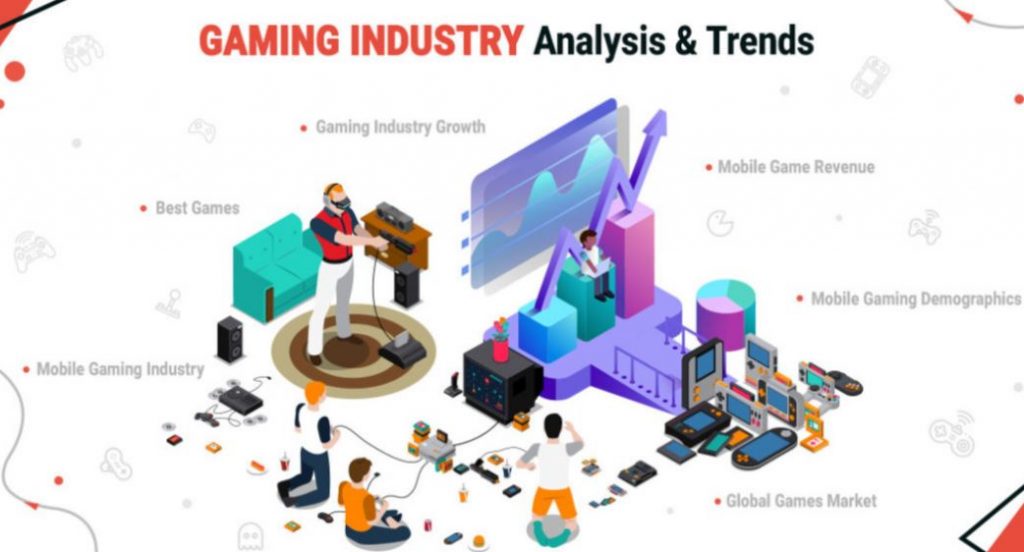A Basic Guide To Age Verification In Gaming Industry

In today’s world, it is essential for businesses to be compliant with anti-spam laws and regulations. This means ensuring that all their customers are who they claim to be and that no unauthorized users are accessing their systems. One way of doing this is through age verification.
What is Age Verification?
Age verification is a process of confirming that a person is of the age that they claim to be online. This can be used in online gaming and other online activities, such as social networking or shopping. It’s important to remember that no verification system is 100% accurate, but it can help protect children from being exposed to inappropriate content or scams, and it can also prevent adults from underestimating someone’s age and inadvertently participating in illegal activities.
There are a number of different methods that game companies can use to verify your age, but the most common ones involve asking you to enter your date of birth or other personal information. Some systems also require you to provide proof of your age, such as a driver’s license or passport.
If you’re using an age verification system, make sure you know how to activate it and how to password-protect it. You should also know how to report any errors or problems with the system.
If you have any questions about using age verification in gaming or online activity, don’t hesitate to contact your favorite game company or the organizations that represent adult gamers.
Process of Online Age Verification
One of the most important factors to consider when vetting potential online players for your gaming community is age. In order to ensure that only appropriate individuals are allowed access to your games, you’ll need to verify their age. This process can be a bit tricky, so here’s a basic guide to help you get started.
The first step is to gather as much information about the player as possible. This includes their name, address, and birthdate. Next, you’ll need to find a reputable online age verification service. There are many available, and each will have different requirements for verifying age. Some services will require you to provide proof of ID, while others may require just the player’s birthdate. Once you’ve chosen service and gathered the necessary information, it’s time to start verifying age.
Your first step will be to contact the service and ask for a validation request form. This form will contain all of the information you gathered about the player, as well as their birthdate. The service will then need to send you an email requesting confirmation of their age. You’ll need to respond promptly with either your original ID or proof of age (a copy of your birth certificate or driver’s license). If
Why Gaming Sector Need Age Verification Solution?

The gaming Sector is a big industry and it is growing rapidly. It has a huge potential to bring in revenue for both the developers and the publishers. However, there are several issues in the gaming sector that need to be addressed. One of these issues is that minors can easily access and play games that are inappropriate for their age. This can lead to negative consequences, such as cyberbullying or addiction. Additionally, gaming companies can lose money if their customers are underage and they’re not allowed to make any purchases. Finally, there’s a risk that minors will learn bad habits that could interfere with their education or future careers.
Age verification is a solution to these problems. It’s an effective way of preventing minors from accessing inappropriate content, making purchases, and learning bad habits. Age verification also protects companies from losing money and customer data. There are several different types of age verification solutions available, so it’s important to choose the best one for your needs. In this article, we’ll provide you with a basic overview of each type of age verification solution and discuss why the gaming sector needs them.
Universal Login: Universal login is a solution that allows users to sign in using their regular username and password. This solution is preferred
Regulatory Compliance

Age verification is a process by which developers and publishers can ensure that players of their games are of legal age to play. In the gaming industry, this is an increasingly important issue as the population of gamers grows older. The implementation of age verification in games can help protect minors from accessing inappropriate content, and can also prevent fraudulent or unauthorized purchases.
There are a number of ways to implement age verification in your game. One option is to use a third-party service like aggregate. aggregate uses facial recognition technology to verify player age, and it provides a variety of reporting tools to help you monitor player activity.
Another option is to use game tokens. These tokens are issued by the developer and can be used to purchase items or access special features within the game. To use game tokens, players must first register their account with the developer. Once registered, players can then use their tokens to purchase items or access features within the game.
Regardless of how you choose to implement age verification, make sure you’re following all applicable regulations. For example, many countries have laws prohibiting minors from accessing adult content online. If your game includes adult content, make sure you’re using appropriate age-verification measures to comply with these
Corporate Social Responsibility
Age verification is a common practice in the gaming industry, and it’s one that many companies are starting to adopt. There are a few reasons for this. First and foremost, age verification is a way to protect children from accessing inappropriate content online. Second, it’s a way to ensure that people who are supposed to be playing the game are actually doing so. And finally, age verification can help to deter fraudsters from attempting to purchase games or premium accounts on behalf of children who don’t actually exist.
There are a few different ways that companies can implement age verification into their gaming ecosystems. The most popular approach is to use an external service like AgeID or GameoID. These services allow companies to verify the age of users directly, without requiring them to enter any personal information. Another approach is to embed age verification functionality directly into the game itself. This way, users need only enter their age once and it will be automatically verified every time they log in.
There are some potential drawbacks to using age verification in gaming ecosystems. First and foremost, it can be difficult for users to find and use these features. Secondly, it can be difficult for users who don’t have access to certain technology platforms or browsers to use
Risk of Fake Identities

Age verification is an important part of the gaming industry as it helps to reduce the risk of fake identities being used in games. It can also help to protect minors from accessing inappropriate content.
There are a number of different methods that games can use to verify age, and each has its own benefits and drawbacks. Here is an overview of the most common methods:
-Date of Birth – This method relies on a player providing their date of birth. Games may use this information to create a user profile or to generate rewards that are only available to users who are over the age of 18. Some games also use this information to match players with other players who have similar interests.
-IP Address – Games may use an IP address to determine a player’s location. This information can be used to create player profiles or match players with other players who have similar interests.
-Gender – Games may require users to indicate their gender so that they can create a user profile that matches their playing style. This information can be used to create player profiles or match players with other players who have similar interests.
-Gambling Age – Many games offer opportunities for users to make real money by gambling in-game
Final Thoughts
As the gaming industry continues to grow, so does the need for age verification. With minors able to access a vast majority of games and apps available on platforms like Apple’s App Store and Google Play, it is important that developers take steps to protect their users. In this article, we will provide a basic guide on how to age-verify your gaming audience.
There are a few different methods you can use to age-verify your users. The most popular is using a government-issued ID card or driver’s license. However, this is not always feasible or affordable for smaller game developers. Another option is using an account verification system like Two-Factor Authentication (2FA). This requires developers to have access to a unique code that can be used in conjunction with other authentication methods, like a login password or email address.
Regardless of the method you choose, make sure you are taking measures to keep your users safe. By verifying their age, you can ensure that they are old enough to enjoy your game without fear of being banned or harassed.



